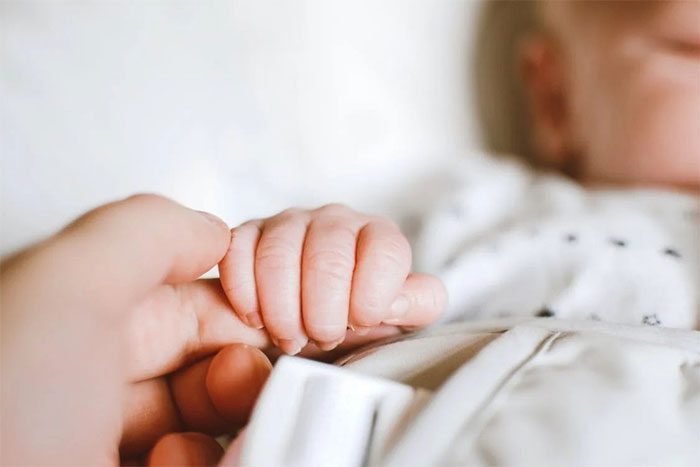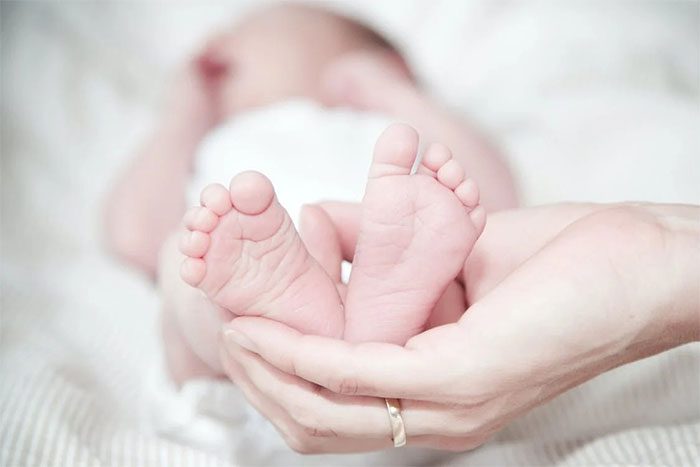The baby born through the new method has DNA from both biological parents and a small amount of genetic material from a donor.
The first baby with DNA from three parents was born using the in vitro fertilization (IVF) technique aimed at preventing children from inheriting severe genetic diseases.

Baby born with DNA from biological parents. (Photo: Pexels).
This technique is known as mitochondrial donation therapy (MDT), which uses tissue from the eggs of a healthy female donor to create IVF embryos without harmful mutations—mutations that the mother carries and could potentially pass on to her children, according to The Guardian.
Children Still Carry DNA from Parents
In MDT, the father’s sperm is used to fertilize the eggs of an affected mother and the eggs from a donor woman. The genetic material from the donor’s egg is removed and replaced with the genetic material from the fertilized egg of the couple.

Children born through MDT are often referred to as “children of three parents.” (Photo: Pexels).
The resulting egg contains a full set of chromosomes from both the father and mother, while also carrying healthy mitochondria from the donor instead of the mother’s faulty mitochondria. The resulting embryo is then implanted into the mother’s uterus.
The child born still has the DNA of the parents as usual and an additional small amount of genetic material from the donor (approximately 37% of genes). Therefore, children born through this method are referred to as “children of three parents”, although in reality, over 99.8% of their DNA comes from their parents.
Mitochondrial donation therapy (MDT) is also known as mitochondrial replacement therapy (MRT). This method has been pioneered by doctors at the Newcastle Fertility Centre in the UK. The research aims to help women with defective mitochondria have children without the risk of genetic disorders.
For these women, natural conception is a “gamble.” Some babies may be born healthy because they inherit only a small portion of the mutated mitochondria. But for children who inherit more, they may develop serious diseases, even leading to death.
It is estimated that one in every 6,000 newborns is affected by mitochondrial disorders. Normally, functioning mitochondria provide essential energy for the cells that make up the organs in the body. However, when mitochondria are mutated, they tend to affect energy-hungry tissues like the brain, heart, muscles, and liver. These conditions worsen over time as the child grows.
In 2015, the UK Parliament changed the law to allow the healthcare sector to implement the MDT method. Two years later, the clinic in Newcastle became the first and only national center licensed to perform it. The first mitochondrial donation cases were approved in 2018.
The Human Fertilisation and Embryology Authority (HFEA) in the UK is responsible for approving donation cases. Currently, at least 30 cases have been “green-lighted” by the HFEA.
Doctors at the Newcastle clinic do not disclose details of births from the MDT program due to concerns that specific information could affect patient privacy. The HFEA only told The Guardian that a small number of newborns have been born through MDT, with an estimated figure of fewer than five babies.

Mitochondrial donation therapy carries risks; children may still inherit diseases from their mother. (Photo: Pexels).
Risks Still Exist
This new method is not without risks. Recent studies have found that in some cases, a small amount of abnormal mitochondria can be transferred from the mother’s egg to the donor’s egg and may proliferate while the baby is in the womb. This “reversal” condition could lead the child to be born with a disease.
Dagan Wells, a professor of reproductive genetics at the University of Oxford, who participated in the research, stated that researchers have yet to fully understand what causes the “reversal” condition in some children born through MDT.
Women with mutated mitochondria can avoid passing on diseases by adopting children or using IVF with donor eggs.
If they want the child to have their DNA, mothers can screen IVF embryos for mutations present in the mitochondria. This method is effective in many cases, but it only reduces risk; it cannot completely eliminate the possibility of the child inheriting diseases from the mother. Moreover, this method will not be effective in cases with high levels of mitochondrial mutations.
The UK is not the first place to create a baby using the MDT method. Previously, in 2016, an American doctor announced the first MDT birth in the world after treating a Jordanian woman with a mitochondrial mutation that caused Leigh syndrome.
Before the treatment was conducted in Mexico, this woman had experienced four miscarriages and had two children. The two children born subsequently died at ages six and eight months.
Professor Dagan Wells noted that mitochondrial donation therapy has shown promising new results, but the number of successful cases is still too few to draw definitive conclusions about the safety and effectiveness of this method.
According to the professor, after children with DNA from three parents are born, they need to be monitored over a long period. The “reversal” condition is difficult to identify precisely when it occurs, but it could happen early.
Therefore, mothers need to be tested before giving birth, around the first 12 weeks of pregnancy. Early testing will help scientists determine whether the “reversal” condition has occurred.


















































